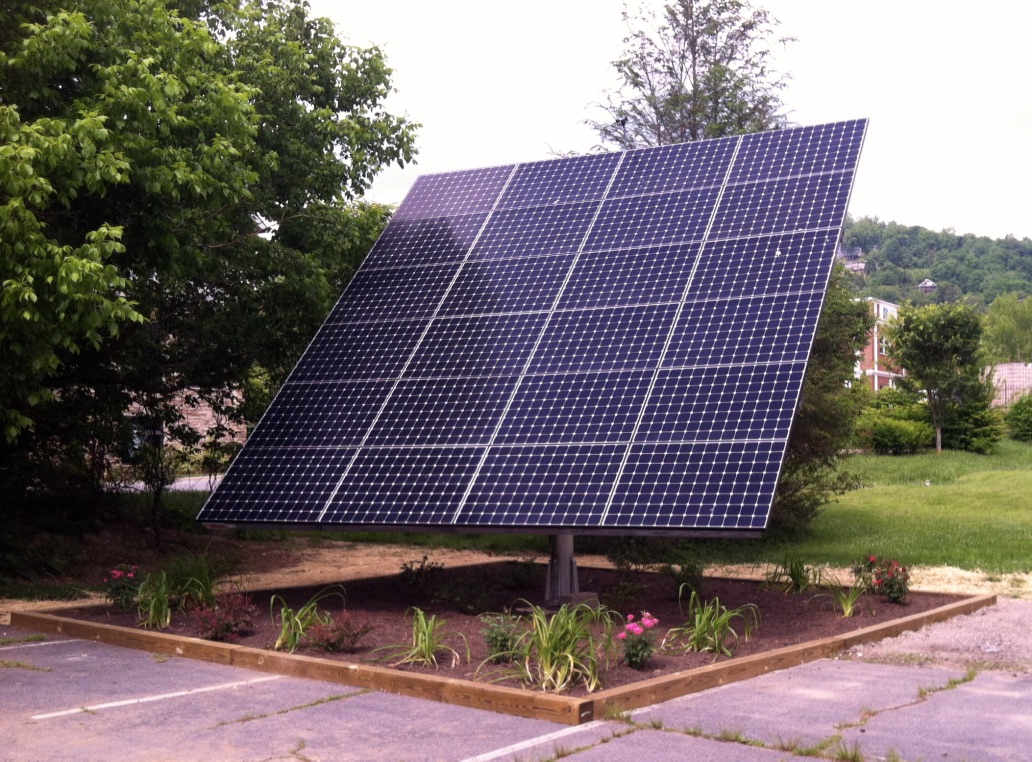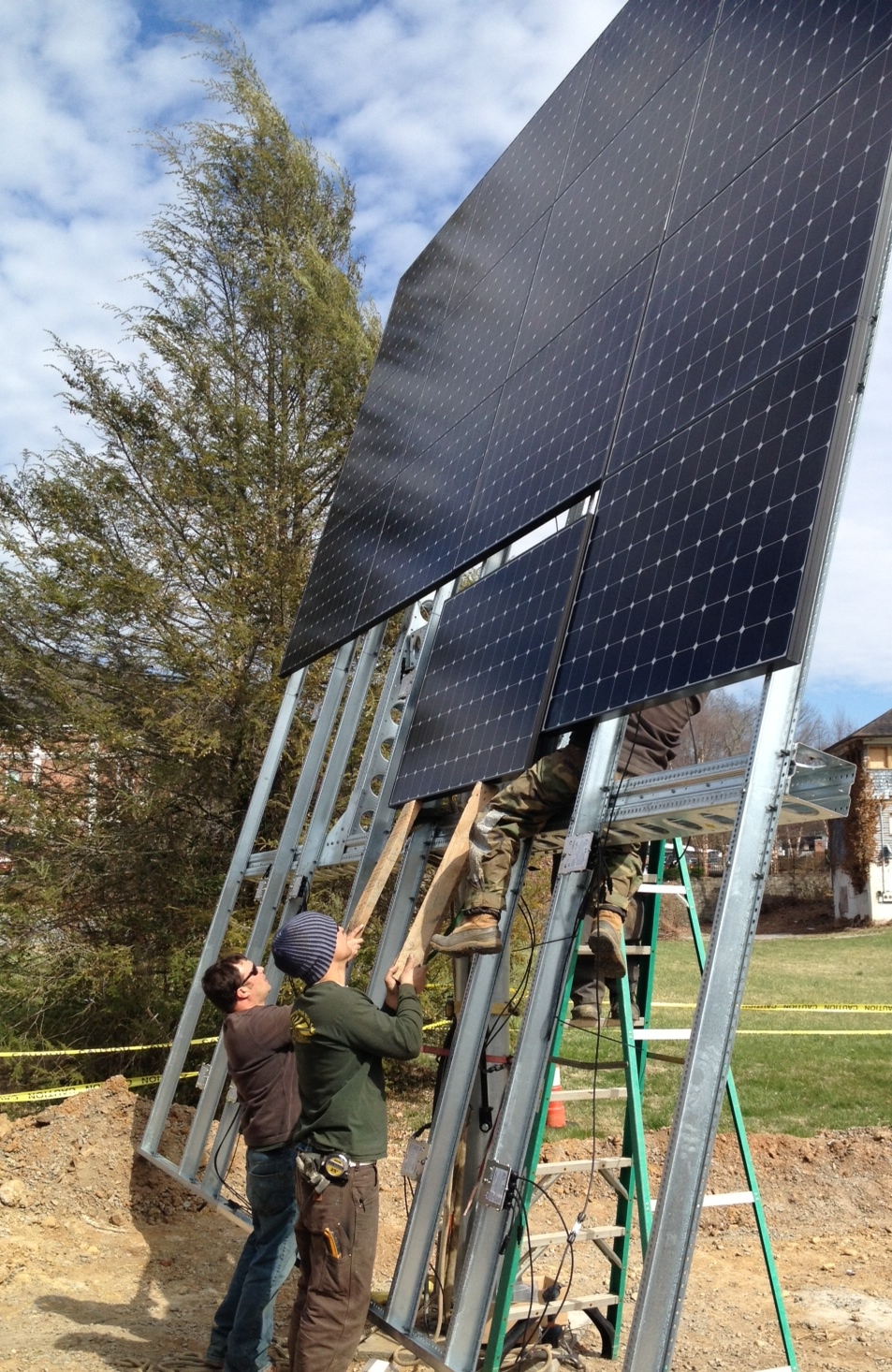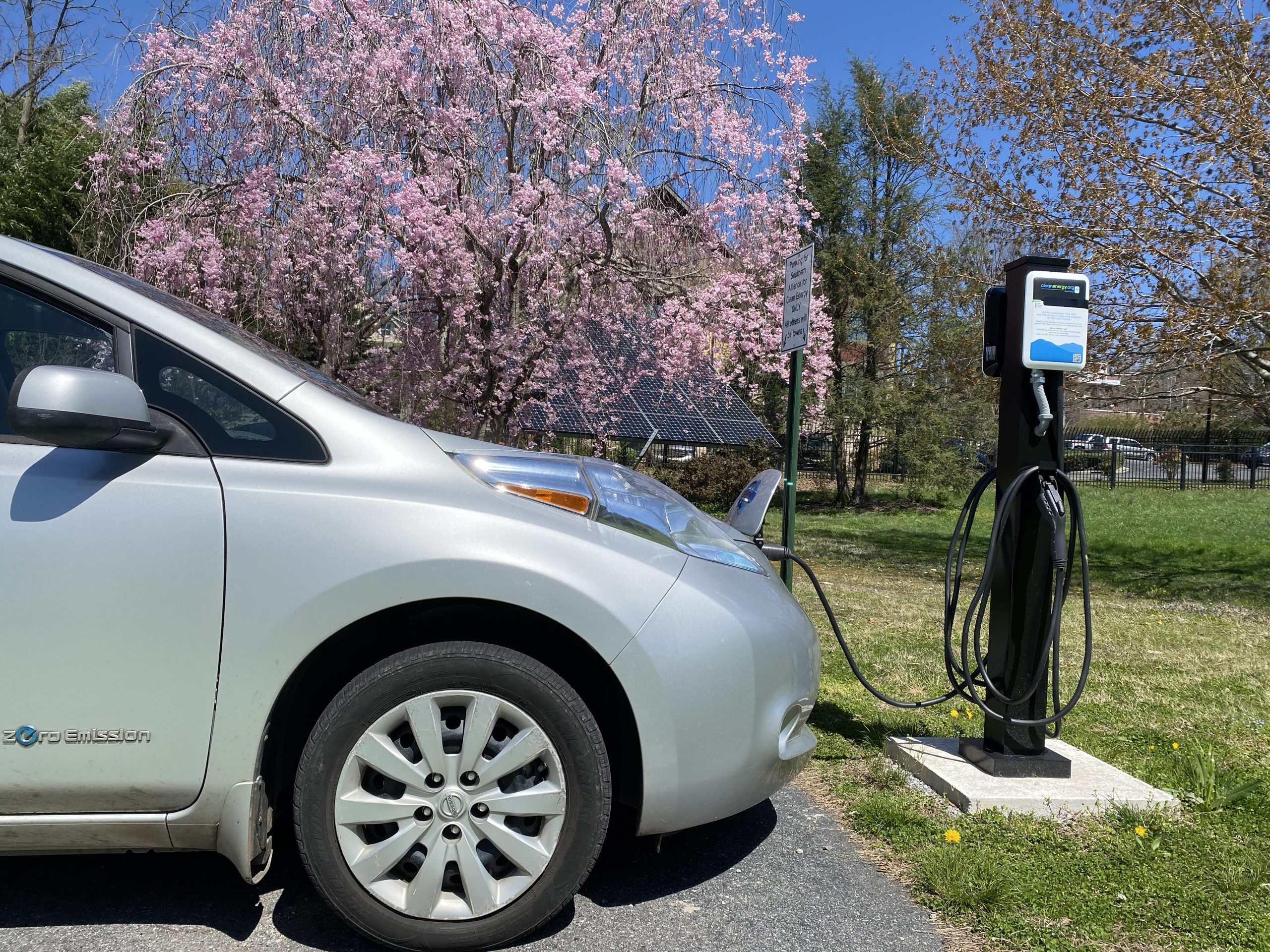It was Spring 2014. Barack Obama was President. The first BMW i3 electric vehicles hit the road in the U.S. People were using iPhone 5s. “12 Years a Slave” won the Oscar for Best Picture. Pharrell Williams’ song reminded us to clap along because we’re “Happy.” And SACE installed solar at our Asheville office.
Our project was one of 52 that resulted from Solarize Asheville, a program designed to help homeowners and small businesses join together to collectively lower the cost and increase the ease of solar installations. And since a new (2021) effort to Solarize Asheville-Buncombe kicks off tomorrow, April 7, we thought now would be a good time to share an update on the impact our system has had thus far.
Solarize campaigns have proven extremely effective at lowering costs and minimizing complexity for homeowners (and in some cases businesses) interested in going solar. The original Asheville campaign was no exception with over 370 enrolled, at least 50 contracts signed, and over 230 kilowatts installed.
Our solar array at 46 Orchard Street is a dual-axis solar tracker with 24 SunPower (327 Watt) mono-crystalline modules and a “smart” SolarEdge Inverter for a total of 7.8 kW (dc) or 6.9 kW (ac). Below is a photo from the 2014 installation and a whole album of photos can be viewed here.
Sundance Power Systems was the contractor selected by Solarize Asheville for the 2014 program and enabled SACE to showcases some of the highest quality and best performing technology on the commercial solar market. This pertains to the modules, the inverter, and the tracking system.
Modules (a.k.a., solar panels)
The SunPower (E20-327) modules were among the most efficient and most powerful available at the time. These modules were rated at 327 Watts, whereas most similarly-sized, conventional modules were around 250 Watts. And they were rated at 20.4% efficiency compared to conventional modules at 15-16% efficiency. Because of the SunPower quality, efficiency, and durability, these modules are expected to produce 20% more energy per watt and 60% more energy per square foot over 25 years compared to conventional modules.
Inverter
SACE’s solar system utilizes an efficient SolarEdge Inverter with DC optimizers. Inverters convert the solar energy absorbed by the module from direct current (DC) to alternating current (AC) so that it’s ready to be used by the host and/or sent to the distribution network. Unlike standard inverters, which are negatively impacted by the lowest producing module in a system, the optimizers allow monitoring and control over individual modules so that the power output of one module is not compromised by the output of another. SolarEdge also provides a sophisticated web platform where you can view the output of the system – or individual modules – for any period of operation.
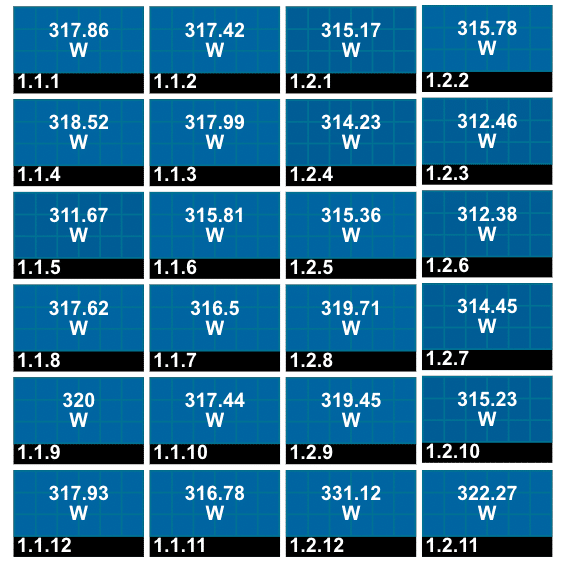
For example, the image to the right is the real-time output from the SACE Asheville system at 2:00 p.m. EDT on Friday (April 2, 2021). Different modules were contributing slightly different amounts of power at that moment. And the combined total output (7.1 kW) actually exceeded the design capacity. I’ve included the full daily plot below. Except for a few clouds in the morning, it was a particularly good solar day.
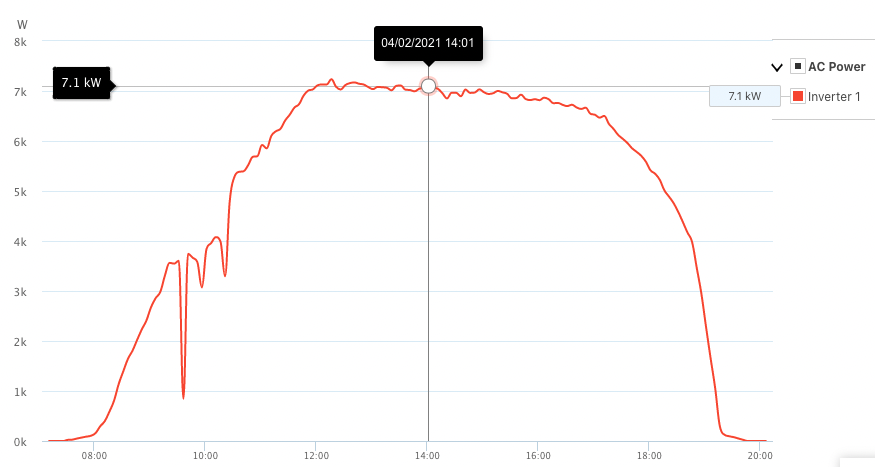
Dual-Axis Tracker
As if the modules aren’t impressive enough, all 24 of them (laid out on a rack that’s 25’ x 25’) are mounted on a single dual-axis tracking system. The AllSun Tracker uses a built-in GPS system to track the sun for both azimuth and altitude throughout the day… in other words, if the sun is out the tracker will find it and point the modules in that direction. This feature allows the modules to produce up to 45% more electricity than a fixed system of the same size.
Results So Far
The SACE array was officially interconnected to the Duke Energy Progress grid on May 2, 2014. Since then, our system has produced 46.6 MWh, prevented over 32,700 kg of CO2 emissions, and saved over $8,500 for our organization. In the non-profit space, reducing operational cost frees up resources to devote toward our mission.
2016 was our peak production year: 14.23 MWh. Most years have produced around 12 MWh.
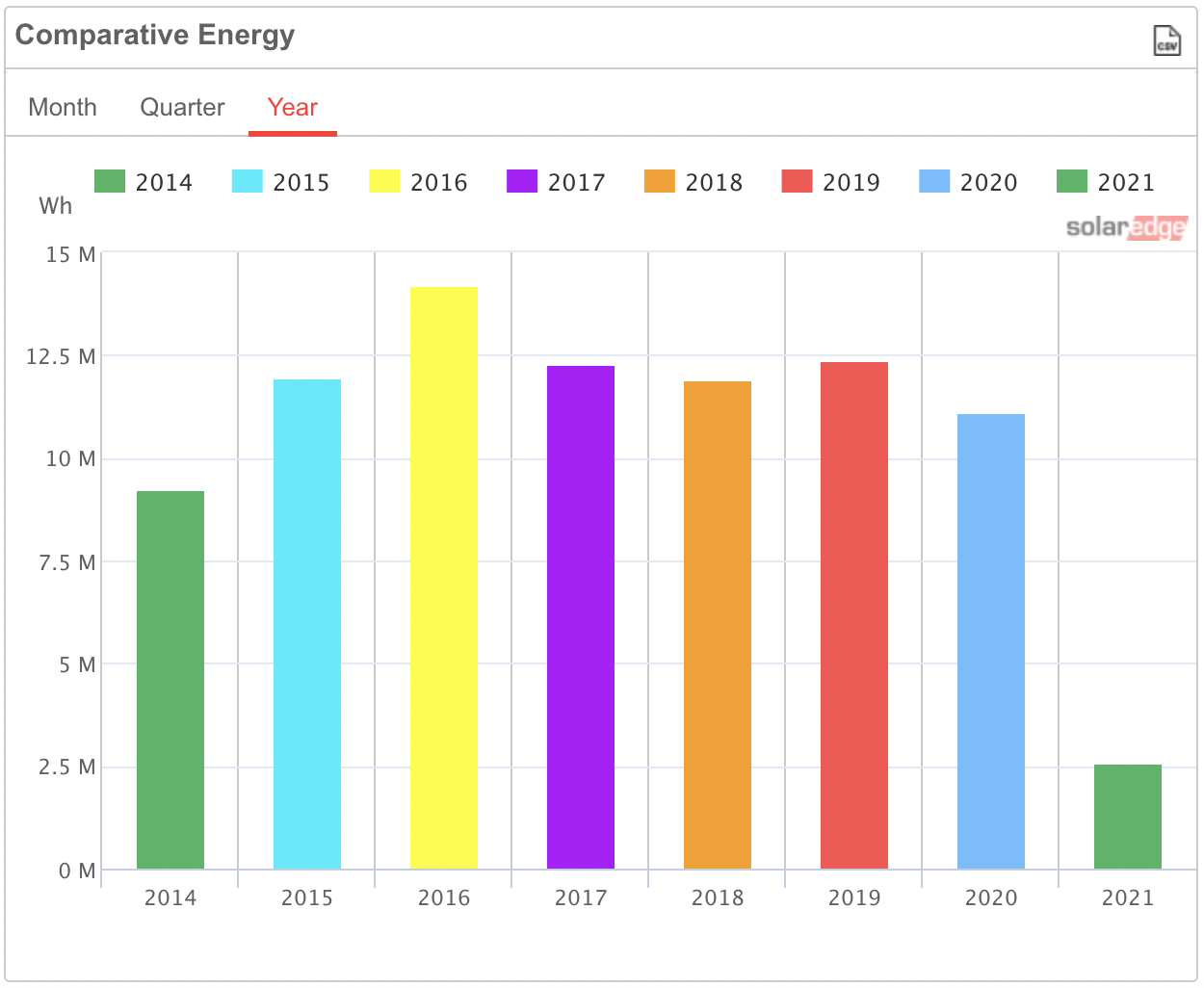
Driving on Sunshine
Adjacent to the solar array, SACE also installed an electric vehicle charging station in 2015. In early 2020, we upgraded the single unit with dual plugs to 2 units with dual plugs so we can currently charge four electric vehicles at one time!
We offer this charging service to local community EV drivers who are enthused about Driving on Sunshine. More information is available about obtaining a dashboard card to take advantage of this opportunity.
2021 Solarize Asheville-Buncombe
If you’ve been interested in solar and you live in Buncombe County, the time is right! To learn more about the new Solarize Asheville-Buncombe program, visit this site, where you can click on “Get Your Free Evaluation” to pre-register. At least of your 142 neighbors have already signed up.
I also encourage you to join Solarize Asheville-Buncombe on Wednesday, April 7 at 6 PM for a virtual launch event with special guests Buncombe County Commission Chair Brownie Newman and Vice-Mayor Sheneika Smith. This press release from last month includes more information about the program and the April 7 launch event.
